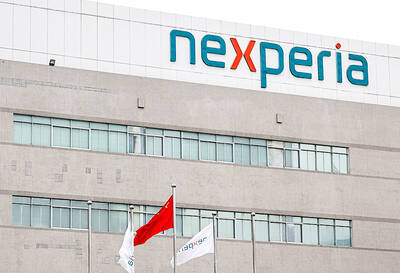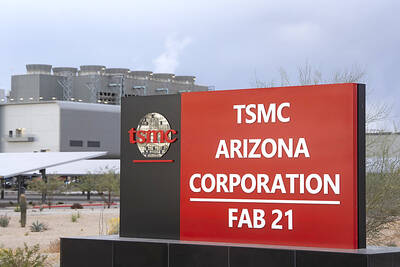Local airline companies may not greatly benefit from an increase in direct passenger flights and new cargo services between Taiwan and China amid improving cross-strait trade ties, analysts said yesterday.
Local carriers expect flights to China to double to at least 72 a week as direct transportation is expected to top the agenda of this week’s cross-strait talks. The nation’s five local airlines will each be able to provide one extra flight per day if that expectation is realized.
“Expanding passenger services, which will complete one of President Ma [Ying-jeou’s (馬英九)] campaign promises, will increase each firm’s share of the business and allow for shorter routes, which translates to fuel savings and possibly ticket savings for passengers,” Charles Ma (馬嘉禾), an airline analyst at SinoPac Securities Corp (永豐金證券), said via telephone yesterday.
The caveat lies in what demand there will be for cross-strait flights. Even the airlines are unable to provide precise estimates, he said.
“Just look at the demand for current weekend charter flights; how will increasing the number of flights and increasing the number of locations help with a basic lack of demand,” Allen Tseng (曾炎裕), an associate manager of Capital Securities Corp, (群益證券) said via a separate telephone interview yesterday.
Tseng said an increase in passenger traffic would not significantly boost the net profits of local airlines in the short term in light of their deep losses in the first three quarters.
As for direct air cargo links, Tseng said in the current environment any type of increased traffic may not be good news for the capital-intensive industry, because of exorbitant fuel prices, airplane depreciation and high fixed costs.
Tseng estimates direct air cargo flights could at best contribute 3 percent of the total revenues of airlines. But with heavy losses reported by China Airlines Ltd (CAL, 中華航空) and EVA Airways Corp (EVA, 長榮航空) this year, such a contribution would be “insignificant,” Tseng said.
In addition, direct air cargo flights between Taiwan and China would notentirely replace the cargo businesses currently routed via Hong Kong and Macao.
“It does, however, put local carriers on equal footing with international air cargo companies, because it lifts the restriction of having to stop in Hong Kong or Macau before entering China,” Tseng said.
Airline stocks traded higher as Association for Relations Across the Taiwan Strait (ARATS) Chairman Chen Yunlin (陳雲林) arrived in Taiwan yesterday.
CAL and EVA stocks both edged higher on the Taiwan Stock Exchange, with CAL trading up NT$0.7 at NT$7.89 and EVA up NT$0.51 to close at NT$8.40.

JITTERS: Nexperia has a 20 percent market share for chips powering simpler features such as window controls, and changing supply chains could take years European carmakers are looking into ways to scratch components made with parts from China, spooked by deepening geopolitical spats playing out through chipmaker Nexperia BV and Beijing’s export controls on rare earths. To protect operations from trade ructions, several automakers are pushing major suppliers to find permanent alternatives to Chinese semiconductors, people familiar with the matter said. The industry is considering broader changes to its supply chain to adapt to shifting geopolitics, Europe’s main suppliers lobby CLEPA head Matthias Zink said. “We had some indications already — questions like: ‘How can you supply me without this dependency on China?’” Zink, who also

Taiwan Semiconductor Manufacturing Co (TSMC, 台積電) received about NT$147 billion (US$4.71 billion) in subsidies from the US, Japanese, German and Chinese governments over the past two years for its global expansion. Financial data compiled by the world’s largest contract chipmaker showed the company secured NT$4.77 billion in subsidies from the governments in the third quarter, bringing the total for the first three quarters of the year to about NT$71.9 billion. Along with the NT$75.16 billion in financial aid TSMC received last year, the chipmaker obtained NT$147 billion in subsidies in almost two years, the data showed. The subsidies received by its subsidiaries —

At least US$50 million for the freedom of an Emirati sheikh: That is the king’s ransom paid two weeks ago to militants linked to al-Qaeda who are pushing to topple the Malian government and impose Islamic law. Alongside a crippling fuel blockade, the Group for the Support of Islam and Muslims (JNIM) has made kidnapping wealthy foreigners for a ransom a pillar of its strategy of “economic jihad.” Its goal: Oust the junta, which has struggled to contain Mali’s decade-long insurgency since taking power following back-to-back coups in 2020 and 2021, by scaring away investors and paralyzing the west African country’s economy.

RE100 INITIATIVE: Exporters need sufficient supplies of renewable energy to meet their global commitments and remain competitive, the economics ministry said Local export-oriented manufacturers, including Taiwan Semiconductor Manufacturing Co (台積電), require sufficient supplies of green energy to maintain their competitiveness and regulations already ensure that renewable energy development adheres to environmental protection principles, the Ministry of Economic Affairs said yesterday, as the legislature imposed further restrictions on solar panel installations. The opposition-led Legislative Yuan yesterday passed third readings to proposed amendments to three acts — the Environmental Impact Assessment Act (環境影響評估法), the Act for the Development of Tourism (發展觀光條例) and the Geology Act (地質法) — which would largely prohibit the construction of solar panels in some areas. The amendments stipulate that ground-mounted solar